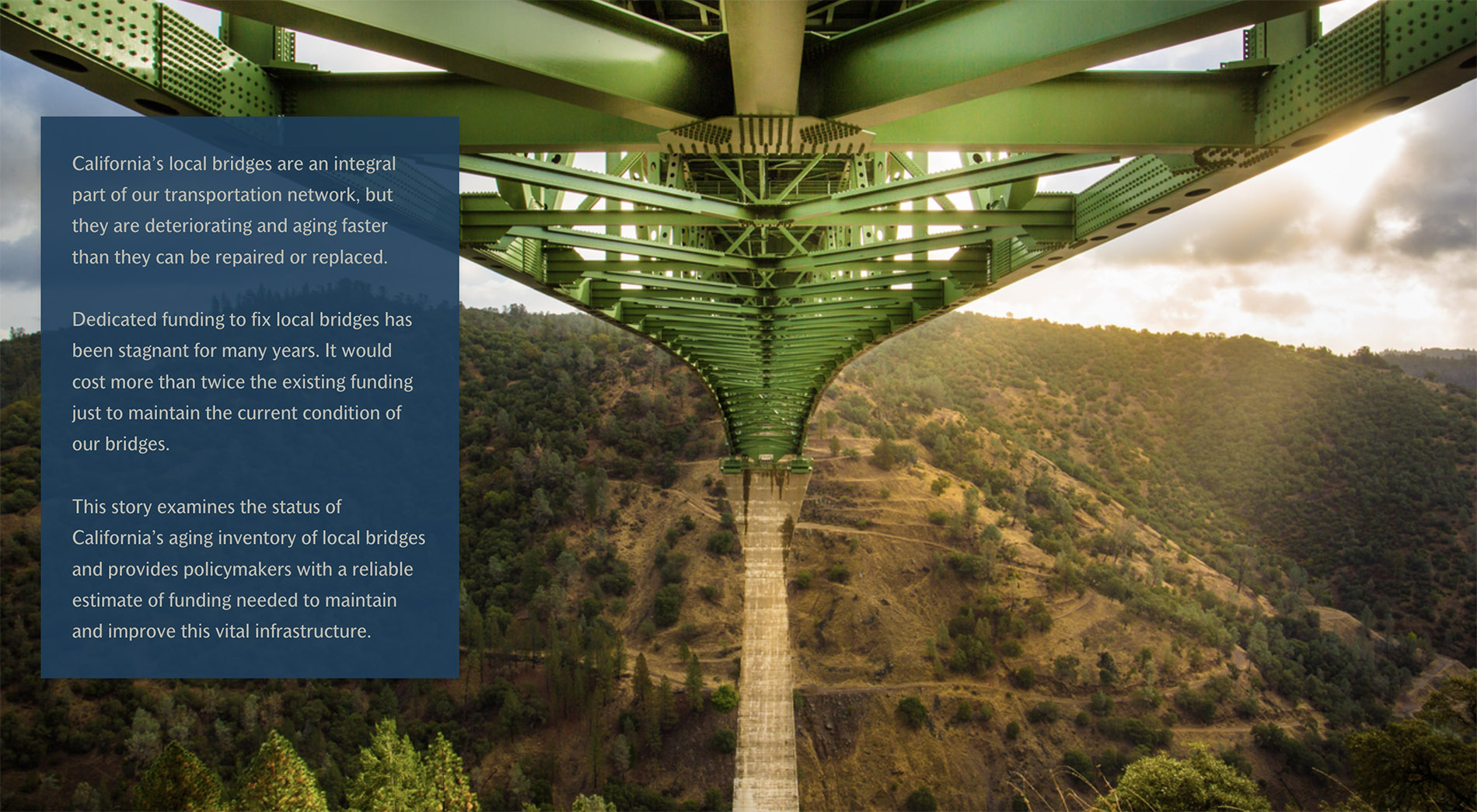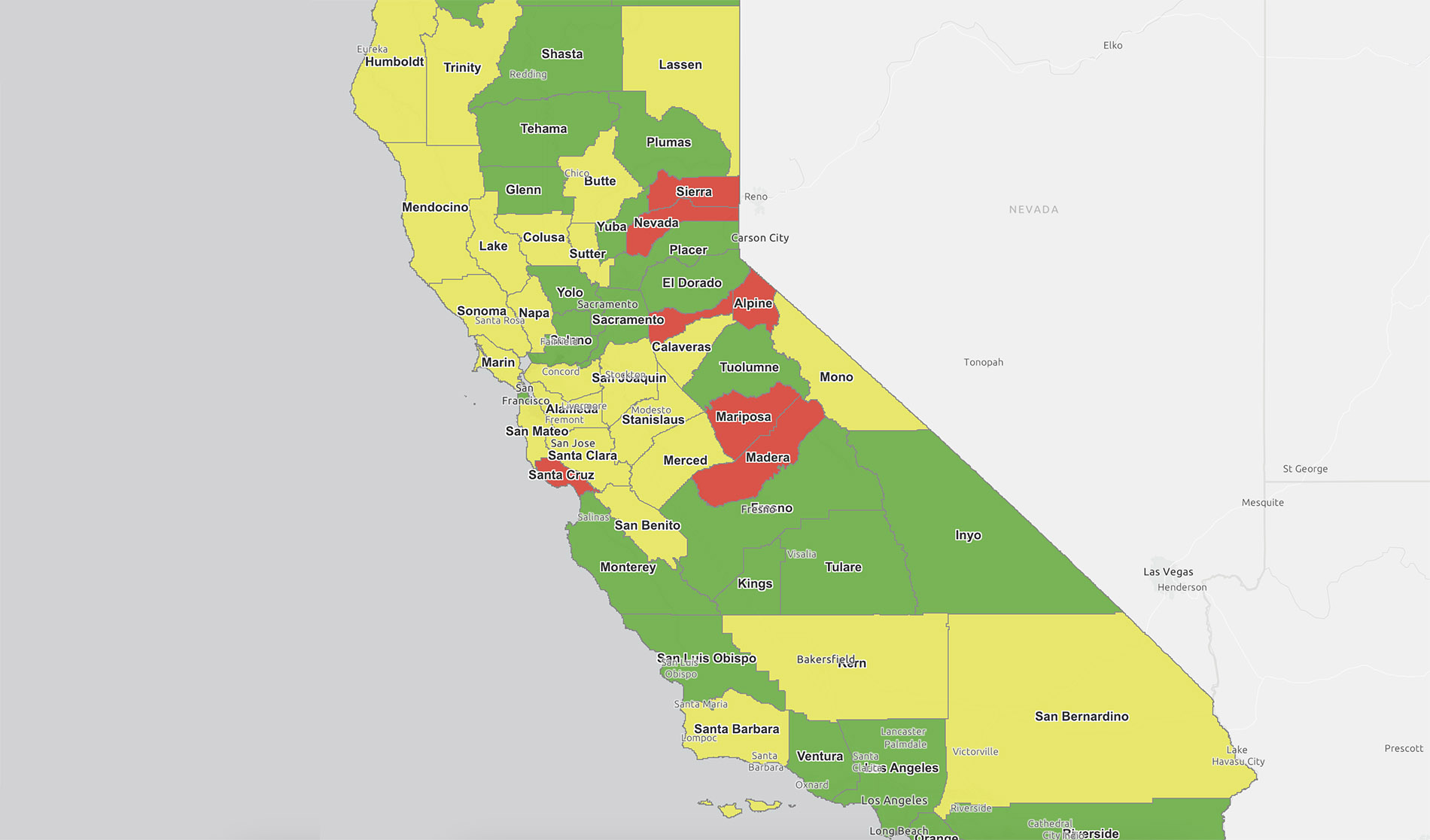Understanding Bridges
Bridges are lifelines connecting our towns, cities, and counties to the state’s economy. They establish safe routes over rivers, creeks, railroads, highways, and other roads. They provide access to schools, grocery stores, offices, retail shops, farms, and factories. In many communities, local bridges provide the only means of access for first responders. When bridges fail or close, local residents and economies are immediately affected.
California’s local bridges are an integral part of our transportation network, but they are deteriorating and aging faster than they can be repaired or replaced. Dedicated funding to fix local bridges has been stagnant for many years. The Local Streets and Roads Needs Assessment includes analysis on the status of California’s aging inventory of local bridge and provides policymakers with a reliable estimate of funding needed to maintain and improve this vital component of our transportation system.
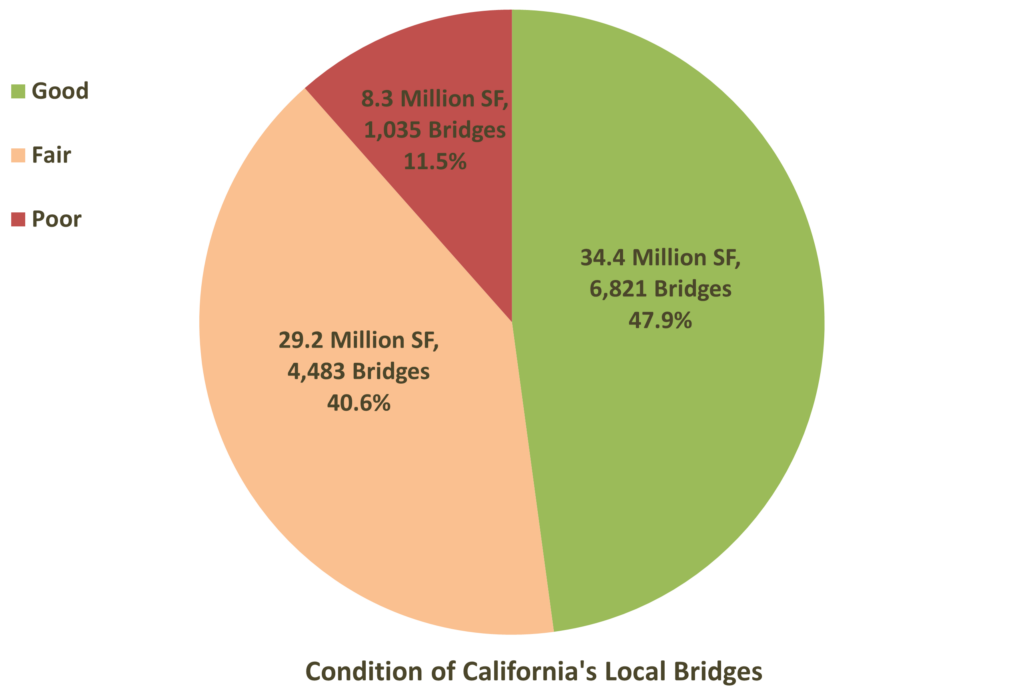
How Many Local Bridges Are there in California?
Cities and counties own and maintain about half of the state’s bridges (12,339). The average age for these bridges is over 50 years – 10 years older than the national average. Almost one-fifth of these bridges are at least 80 years old, which is of significant concern, since most bridges were designed for a 75-to-100-year lifespan. The chart above indicates that more than half (52.1 percent of total deck area) of our local bridges are in “Fair” to “Poor” condition. Over 7 million vehicle trips are made across “Poor” local bridges every day. As bridges age, the rate of deterioration also increases due to increasing traffic volumes and accumulated wear and tear.
How Much Will it Cost to Make Essential Repairs?
It will require $7.2 billion in today’s dollars to make important safety, strengthening, and widening improvements to keep pace with California’s modern mobility needs. Just to maintain our current state of disrepair, it would require nearly $800 million annually.
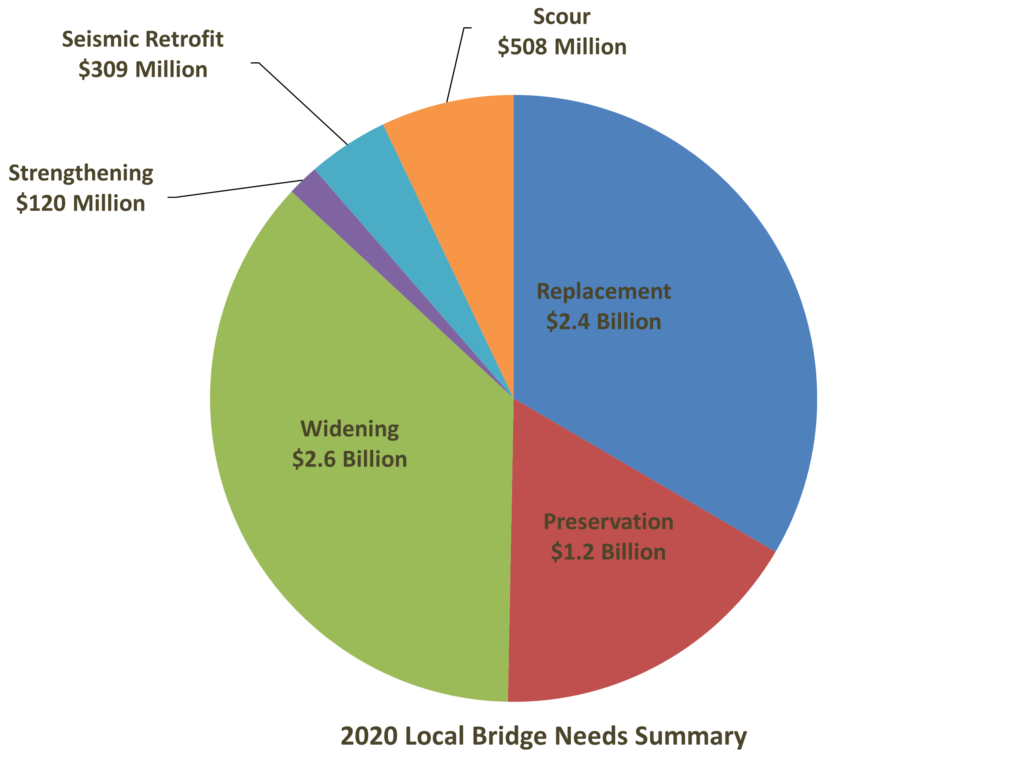
How Much Funding Have We Allocated for Repairs?
The primary funding source for local bridge projects has traditionally been through the Highway Bridge Program (HBP). This funding source has been stagnant over the past 10 years; at less than $300 million dollars annually. At this investment level, the percentage of local bridges in poor condition will climb above 50% within the next 20 years.
To put it another way, approximately 250 bridges need to be repaired or replaced annually. In California today, less than 50 bridge repairs are completed every year.
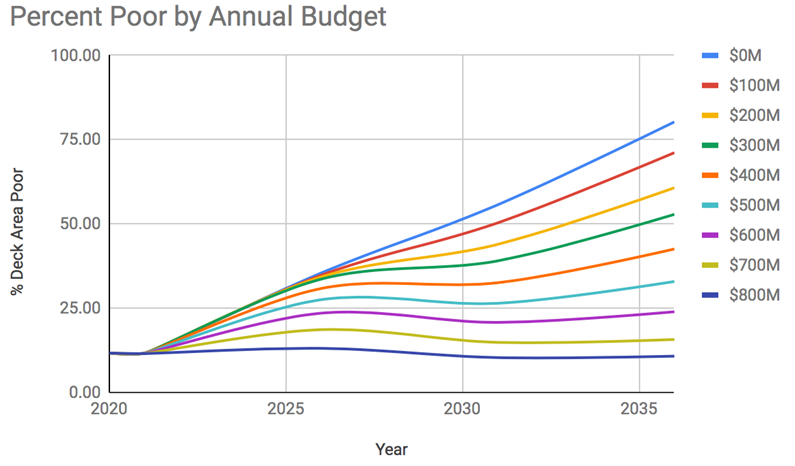
Conclusion
The needs for California’s local bridges are increasing every year as they age. At the same time, the cost of bridge repairs continues to increase due to an increase in project complexity – based on design features, traffic widths, modern traffic loads, environmental regulations and permitting, and other project requirements. Today, bridge construction costs are considerably more and take more time to complete than they did at the time of their original construction dates.
The current rate of bridge replacement and major rehabilitation projects is not keeping up with the bridges that are reaching the end of their expected service lives. At the same time, maintenance needs within the aging population are also increasing. In conclusion, funding must be increased to $800 million annually just to maintain the current condition of California’s local bridge inventory. And to improve the overall condition of our bridges as a key component in our local transportation network, the annual investment must be even higher.

